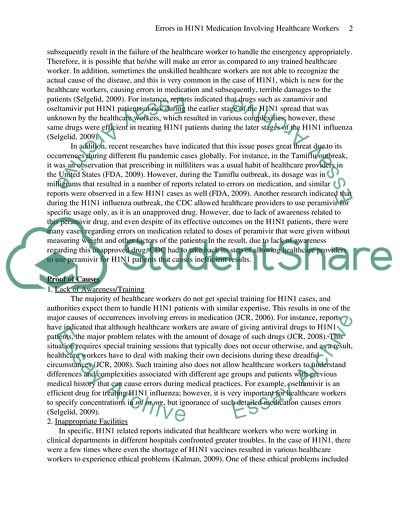Cite this document
(“Errors in H1N1 Medication Involving Healthcare Workers Essay”, n.d.)
Errors in H1N1 Medication Involving Healthcare Workers Essay. Retrieved from https://studentshare.org/health-sciences-medicine/1562785-problem-essay-on-h1n1
Errors in H1N1 Medication Involving Healthcare Workers Essay. Retrieved from https://studentshare.org/health-sciences-medicine/1562785-problem-essay-on-h1n1
(Errors in H1N1 Medication Involving Healthcare Workers Essay)
Errors in H1N1 Medication Involving Healthcare Workers Essay. https://studentshare.org/health-sciences-medicine/1562785-problem-essay-on-h1n1.
Errors in H1N1 Medication Involving Healthcare Workers Essay. https://studentshare.org/health-sciences-medicine/1562785-problem-essay-on-h1n1.
“Errors in H1N1 Medication Involving Healthcare Workers Essay”, n.d. https://studentshare.org/health-sciences-medicine/1562785-problem-essay-on-h1n1.


